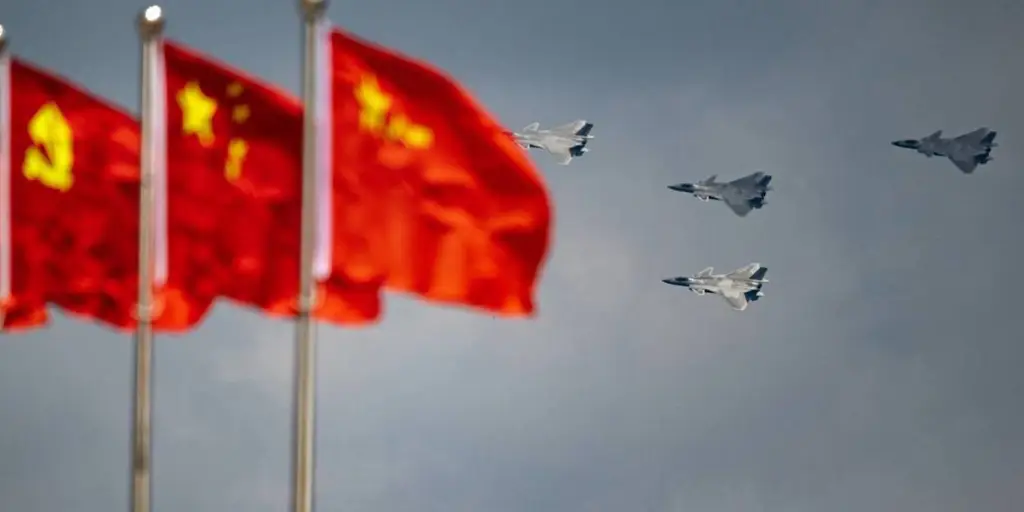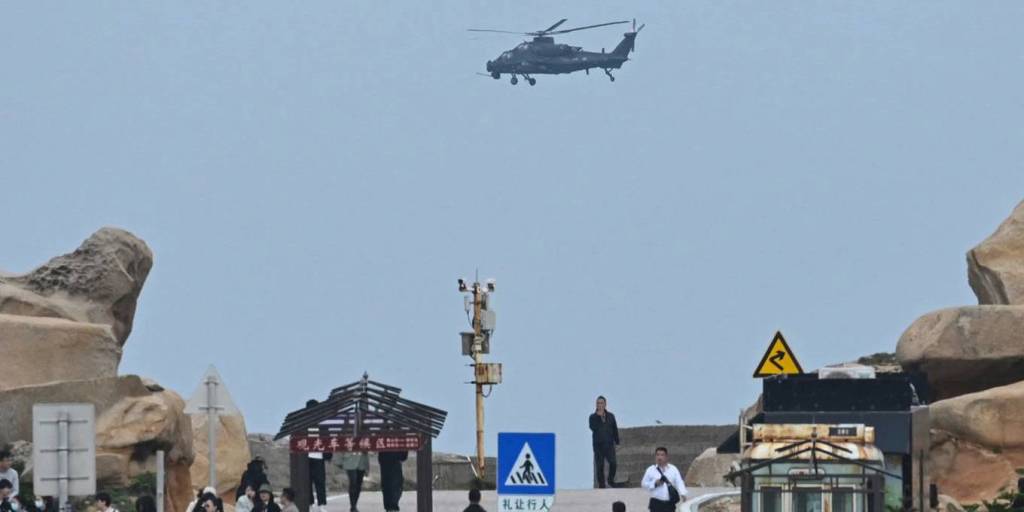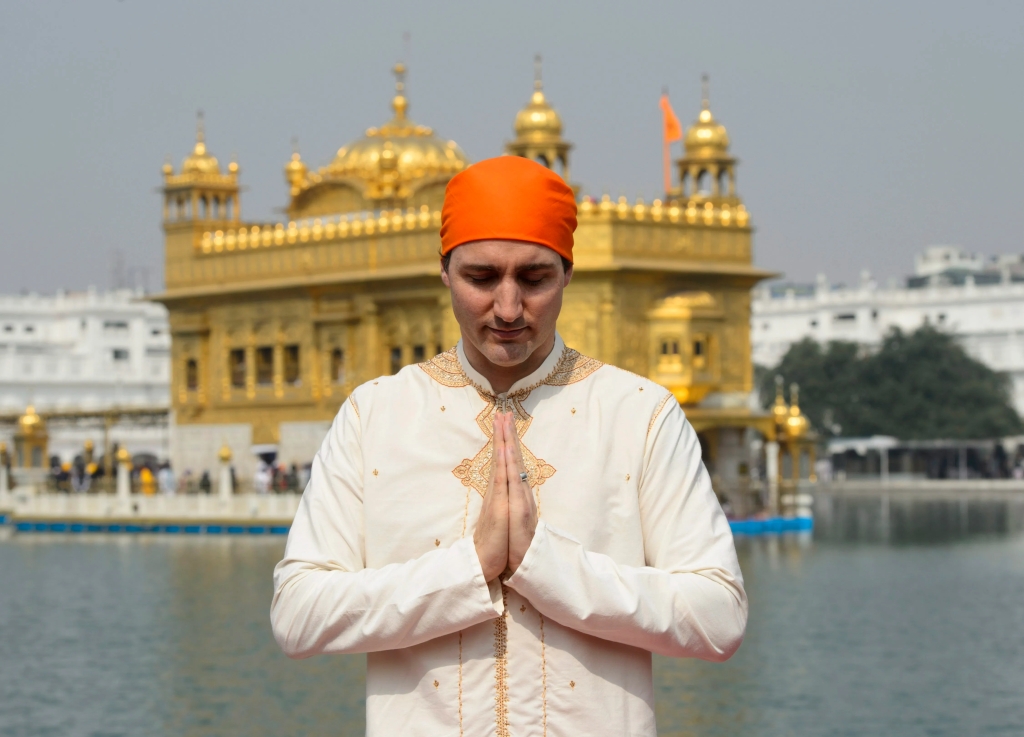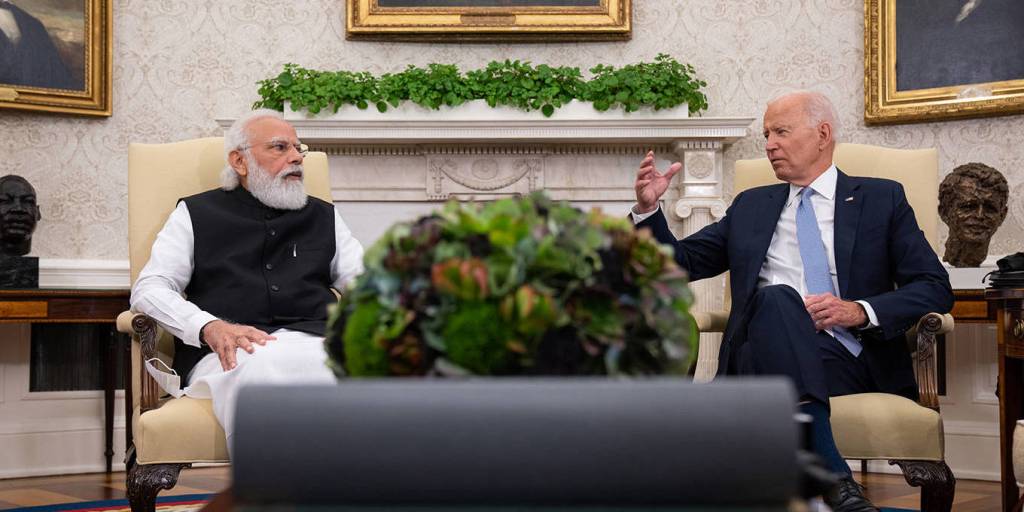The West’s strategic overreach vis-à-vis Russia is not only alienating much of the rest of the world, but also providing a windfall for its real rival, China. Unless it changes course, the West is likely to lose its global supremacy, including its hold on the international financial architecture.

BRAHMA CHELLANEY, Project Syndicate
MUNICH – Since Russia launched its full-scale invasion of Ukraine more than two years ago, the West has desperately sought ways to punish Russia without harming itself in the process. It has mostly failed.
So far, not even unprecedented sanctions have derailed Russia’s economy, let alone compelled the Kremlin to change its behavior. Instead, Russia has pivoted to a war economy: it now produces nearly three times as many munitions as NATO, including more missiles than it was producing before the war began.
Much of the West, by contrast, is facing economic stagnation, owing not least to the switch away from cheap Russian energy to costlier supplies from elsewhere. The United Kingdom is officially in recession, and there has been no growth in the eurozone since the third quarter of 2022, when gas prices surged, leading the European Central Bank to start raising interest rates to stem runaway inflation. Higher fuel prices have helped turn former economic powerhouse Germany into the worst-performing developed economy.
European growth is not the only casualty of Western sanctions against Russia. The US dollar – which was already facing “stealth erosion” before the Ukraine war – appears to have lost some of its global influence, even in oil markets, as countries pursue alternatives to the greenback in response to the West’s decision to weaponize finance. Meanwhile, rising gold purchases by central banks in China, Turkey, India, Kazakhstan, and Eastern Europe, coupled with greater geopolitical uncertainty, have helped drive prices to a record high.
The European Commission’s move to seize the profits generated by frozen Russian central-bank assets would reinforce these trends. Given the centrality of central banks in the global financial system, their assets have historically been considered sacrosanct. But Russia’s assets – over two-thirds of which are held by the Brussels-based clearing house Euroclear – were frozen unilaterally by Western governments, without authorization from the International Court of Justice or the United Nations Security Council, as required by international law.
Now, with “Ukraine fatigue” weakening Western support for continued military and financial aid, the European Commission wants to start tapping the €3.25 billion ($3.45 billion) in annual accrued interest on the frozen assets. Under its current proposal, most of the revenues would be channeled through the European Peace Facility, which refunds EU states for sending arms to Ukraine, with the rest going to the EU’s central budget, to be used to strengthen Ukraine’s weapons-manufacturing capacity.
But such a move would be unlikely to help turn the tide in the Ukraine war. What Ukraine really needs more than weapons and funds are new recruits to replenish the ranks of its exhausted and depleted forces. Here, its options are limited: not even draconian conscription practices have been able to offset the growing troop shortfall.
What seizing Russia’s earnings would do is set a dangerous precedent in international law and deal a blow to Europe’s credibility as a champion of a rules-based world order; the Commission’s proposed “legal pathway” amounts to lawfare, pure and simple. It would also signal to other countries that their money is not safe in the West, thereby strengthening further their incentive to seek alternatives to Western institutions and currencies. If this trend continues, the West’s financial-sanctions arsenal will be weakened considerably. Already, the West’s routine use of sanctions is reducing their impact.
Not only do Western sanctions fail to change the behavior of the government being targeted, whether Russia, Iran, Myanmar, or Syria; they also almost invariably advance China’s commercial and strategic interests. In fact, no country is profiting more from Russia’s invasion of Ukraine – and the West’s response to it – than China.
Beyond expanding the international use of the renminbi, Western sanctions against Russia created an opportunity for China to secure greater cheap supplies of Russian oil, gas, and grains. Transported along secure overland routes, these supplies would likely continue being delivered even in the event of a war with the West, easing a major source of anxiety for China over its designs on Taiwan.
Moreover, China has more than doubled its nuclear-weapons arsenal since 2020, and it is expanding its conventional forces faster than any other country has since World War II. Yet the West is so fixated on punishing Russia that China has managed to avoid much scrutiny, let alone pushback. US President Joe Biden, for example, is now attempting to “manage competition” with China by laying greater stress on diplomacy than on deterrence, with his latest budget woefully underfunding key enabling capabilities for the Indo-Pacific and even slashing the production target for Virginia-class submarines from two per year to just one. Small wonder that China is quietly oiling the Kremlin’s war machine. For China, the longer the West stays distracted, the better.
Make no mistake: China poses a far greater threat to Western interests and the rules-based world order than Russia. Whereas Russia’s designs are largely confined to its neighborhood, China has the ambition to supplant the US as the preeminent global power. It may well also have the means: China’s population and economy are about ten times larger than Russia’s, and China spends some four times as much as Russia on its military.
The West, which accounts for just 12% of the global population, should not underestimate the potential consequences of simultaneously enabling China’s increasingly aggressive rise and alienating the rest of the world. Unless it abandons its strategic overreach vis-à-vis Russia and turns its attention to its real rival, China, the West is likely to lose its global supremacy, including its hold on the international financial architecture.
Brahma Chellaney, Professor of Strategic Studies at the New Delhi-based Center for Policy Research and Fellow at the Robert Bosch Academy in Berlin, is the author of nine books, including Water: Asia’s New Battleground (Georgetown University Press, 2011), for which he won the 2012 Asia Society Bernard Schwartz Book Award.



 Indian Prime Minister Narendra Modi, right, has discussed the Himalayan crisis with Chinese President Xi Jinping at two separate multilateral summits. © Reuters
Indian Prime Minister Narendra Modi, right, has discussed the Himalayan crisis with Chinese President Xi Jinping at two separate multilateral summits. © Reuters


 Indian Prime Minister Narendra Modi, right, and U.S. President Joe Biden in June: Despite an improved relationship, U.S. strategic objectives still diverge from core Indian interests. © Reuters
Indian Prime Minister Narendra Modi, right, and U.S. President Joe Biden in June: Despite an improved relationship, U.S. strategic objectives still diverge from core Indian interests. © Reuters
 A banner erected by the Indian army near Pangong Tso lake along the country’s frontier with China. © AP
A banner erected by the Indian army near Pangong Tso lake along the country’s frontier with China. © AP





You must be logged in to post a comment.